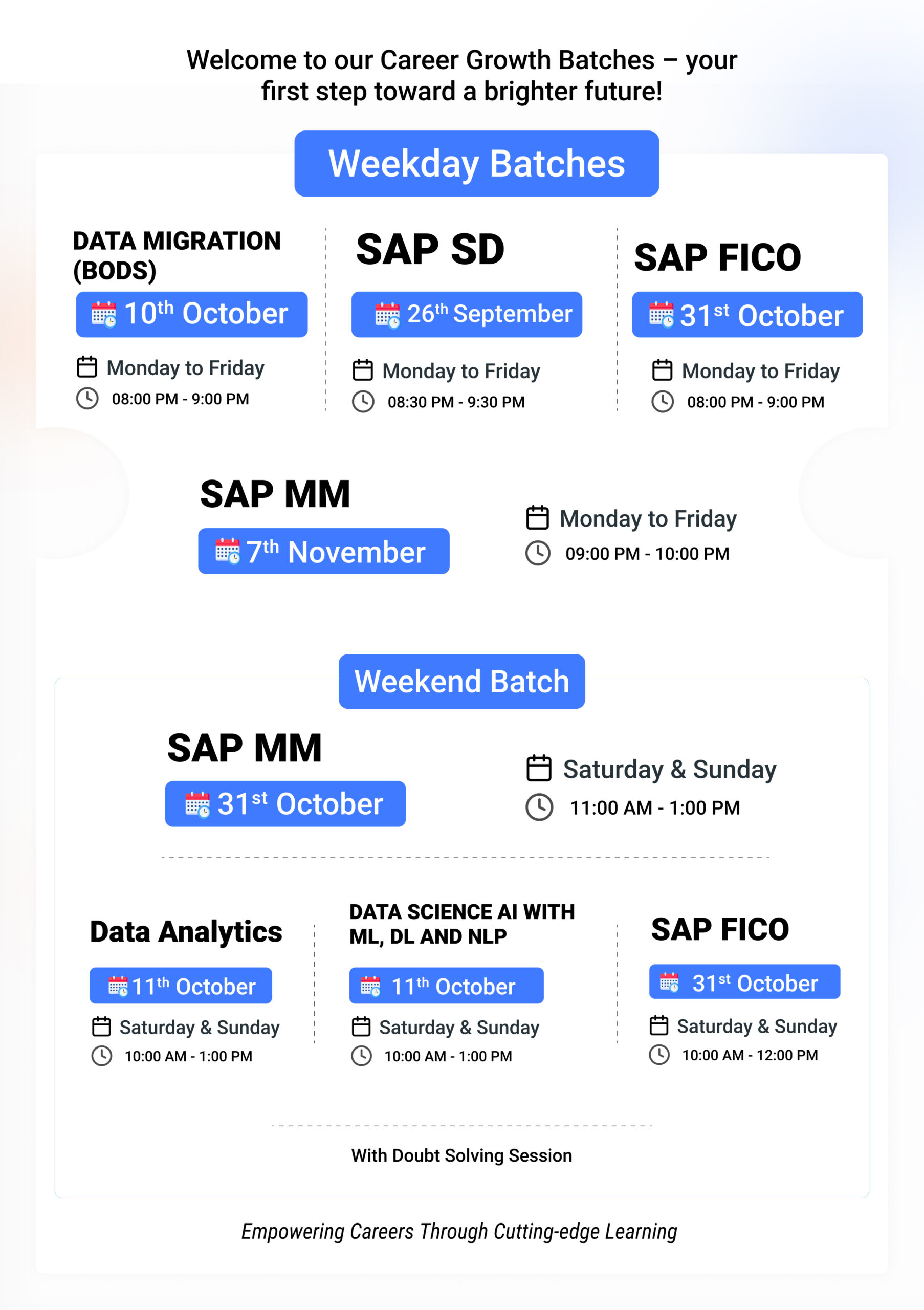Mastering SAP Logistics Module (LO)
Mastering SAP Logistics Module (LO): The Complete Guide
Introduction to SAP Logistics Module
The SAP Logistics Module (LO) serves as the backbone of supply chain operations within SAP ERP systems. In today’s competitive business landscape, this integrated solution enables organizations to streamline inventory, warehousing, transportation, and production planning through a unified platform.
Core Components of SAP LO Module
Inventory Management (IM)
- Real-time stock level monitoring
- Multi-location inventory tracking
- ABC classification for optimized stock handling
- Automated reorder point calculations
Warehouse Management (WM)
- Intelligent bin management systems
- Optimized picking and putaway strategies
- Storage type configuration
- Cross-docking capabilities
Transportation Management (TM)
- Route optimization algorithms
- Carrier selection and rate comparison
- Freight cost calculation
- Customs and compliance management
Production Planning Integration
- Material Requirements Planning (MRP)
- Capacity planning tools
- Production order management
- Bill of Materials (BOM) processing
Key Benefits of Implementing SAP LO
Operational Efficiency Gains
- Reduced inventory carrying costs
- Minimized stockouts and overstocking
- Improved warehouse productivity
- Optimized transportation spend
Strategic Business Advantages
- Enhanced supply chain visibility
- Data-driven decision making
- Improved customer service levels
- Better supplier collaboration
Advanced Technological Integration
AI and Machine Learning Applications
- Predictive demand forecasting
- Intelligent replenishment suggestions
- Anomaly detection in logistics flows
- Automated exception handling
IoT and Real-Time Monitoring
- Connected warehouse devices
- Shipment tracking sensors
- Equipment monitoring
- Condition-based maintenance
Implementation Best Practices
System Configuration Approach
- Business process mapping
- Customization vs. standard functionality
- Integration with other SAP modules
- User role definition
Change Management Considerations
- End-user training programs
- Phased rollout strategy
- Key performance indicators
- Continuous improvement process
Industry-Specific Applications
Manufacturing Sector
- Just-in-time inventory
- Production line feeding
- Spare parts management
Retail and Distribution
- Omnichannel fulfillment
- Seasonal inventory planning
- Reverse logistics handling
Service Industries
- Fleet management
- Field service logistics
- Maintenance part availability
Future Trends in SAP Logistics
Cloud-Based Solutions
- SAP S/4HANA Logistics
- Hybrid deployment models
- Scalable infrastructure
Emerging Technologies
- Blockchain for supply chain transparency
- Autonomous warehouse robotics
- Digital twin simulations
Conclusion: Transforming Supply Chain Operations
The SAP Logistics Module provides organizations with:
- Comprehensive supply chain control
- Seamless process integration
- Actionable operational insights
- Continuous improvement capabilities








